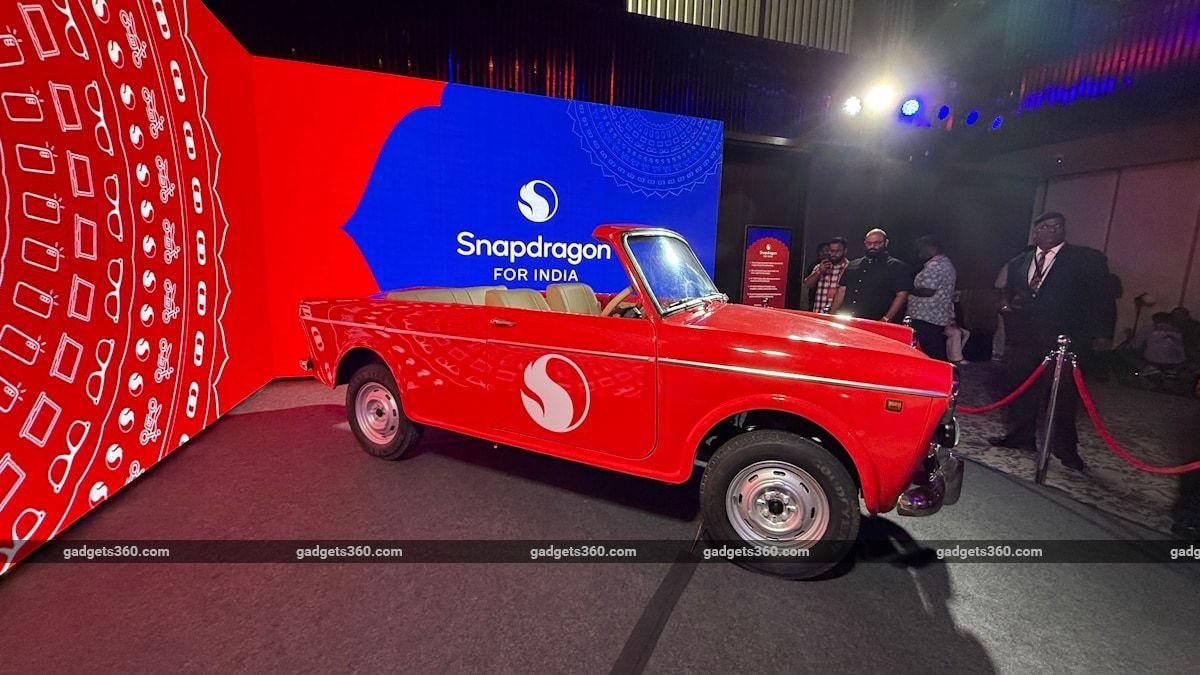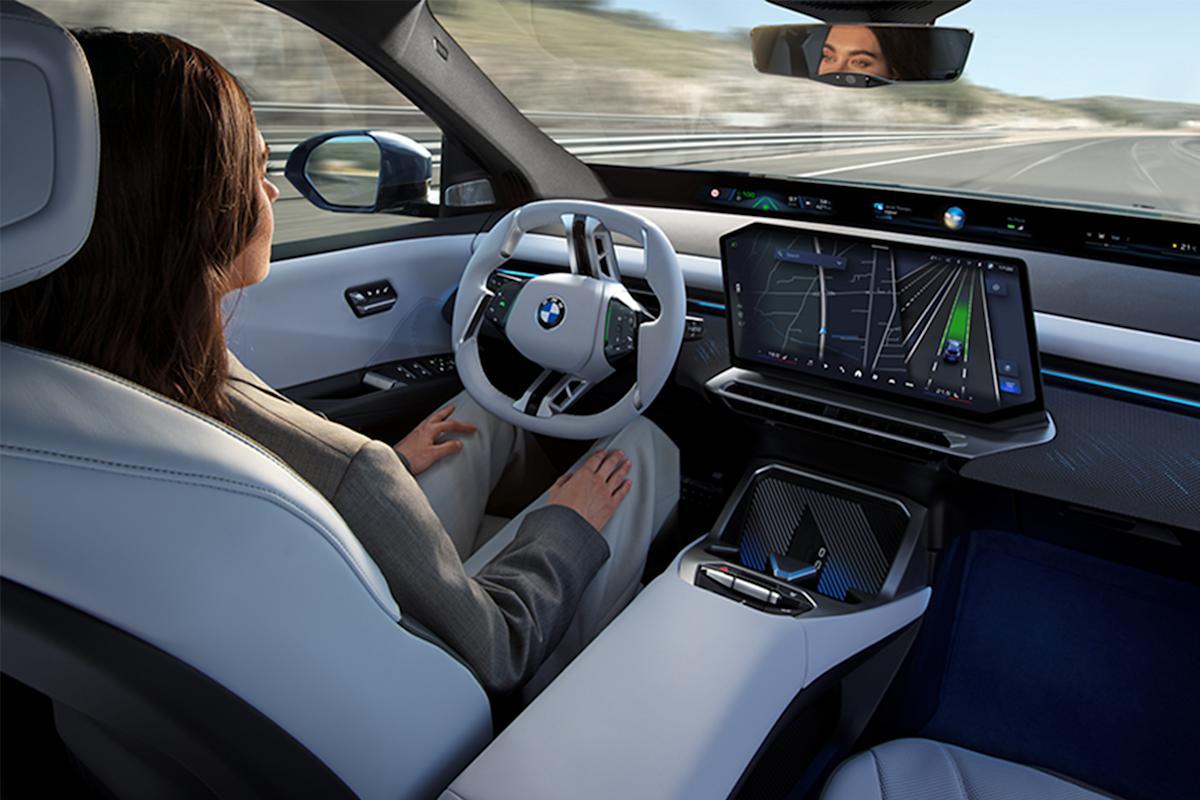Qualcomm Unveils India-Focused Automotive Strategy at Inaugural Snapdragon Auto Day
2 Sources
2 Sources
[1]
How Qualcomm is Pushing India's Automotive Landscape
The Snapdragon for India: Auto Day is the first-ever edition by Qualcomm Qualcomm hosted its first Snapdragon for India: Auto Day on Wednesday, showcasing multiple strategic collaborations in the automotive sector. Imagine if I tell you that the car you're probably driving has a Qualcomm chipset? That was news to me when I spoke with Qualcomm executives at the sidelines of Snapdragon for India: Auto Day in New Delhi. At the event, the chip-maker showcased various strategic collaborations with partners, like KPIT, an AI-powered Smart Chassis Platform with Integrated Vehicle Motion Control (IVMC). Of course, this is powered by Qualcomm, which acts as an enabler for such a tech stack. Nakul Duggal, Group GM, Automotive and Industrial and Embedded IoT, Qualcomm, talked about the company's strategic focus on India, highlighting its significant engineering presence and innovation efforts. During his keynote, Duggal spoke about the shift from low-end to premium experiences in India, with a focus on AI through Digital Chassis. The event also highlighted Qualcomm's partnerships with major automakers, including Maruti Suzuki India Limited and Mahindra, showcasing advanced technologies such as autonomous braking and cybersecurity features. Nakul Duggal, Group GM, Automotive and Industrial and Embedded IoT, Qualcomm, during keynote Hisashi Takeuchi, Managing Director & CEO of Maruti Suzuki India Limited, discussed how the collaboration with Qualcomm began five years ago. He also revealed that the second-generation Baleno was the first car from the company to utilise connected car features from Qualcomm, and he added that the upcoming e-Vitara EV will feature Qualcomm technology. The event also saw the presence of Velusamy R, President - Automotive Business, M&M Limited and Managing Director, Mahindra Electric Automobile Limited. Qualcomm's Duggal discussed the various aspects of how the company is enhancing premium in-cabin experiences, like multiple high-res displays at the front and rear with enhanced graphics support, natural language understanding for intuitive voice control for vehicle interactions, multimdal interfaces for multiple mechanisms for engaging the vehicle, face recognition that can add an extra layer of security and highly personalised experience for all occupants. He also discussed key aspects, such as driver monitoring, which keeps drivers alert and aware of their surroundings to enhance safety, as well as a surveillance system featuring surround-view cameras, adding contextual awareness to enhance safety and security further. Qualcomm says that over 350 million vehicles globally are powered by Snapdragon Digital Chassis The premium in-cabin experience will also include a premium sound experience with zonal audio with active noise and echo cancellation, machine learning and Edge AI for user and contextual data to inform higher levels of personalisation. Duggal gave an example of how Qualcomm has been in automotive for 20+ years, "We started our journey with OnStar, with General Motors back in 2002, when the US was moving from analogue to digital, we worked with GM to get them to use CDMA, which was a technology that we innovated. And the history of the company was actually in trucking telematics. Back in the late 80s, we had actually created a system called Omni Tracks, which was solely for long-distance trucking in the US and Mexico and eventually in Europe." Qualcomm keeps two-wheelers in focus as well with services like 4G/ 5G/ GPS, Wi-Fi, Bluetooth LE, nearby charging station notifications, vehicle service alerts and more Duggal also touched upon the global call to action for road accidents. He claimed that around 1.2 million fatalities globally could be prevented each year by adopting advanced vehicle-to-everything (V2X) technology. In his keynote, he explained that V2X technology supports direct, low-latency communication between vehicles (V2V), roadside infrastructure (V2I) and vulnerable road users (V2VRU). The tech can help with collision avoidance safety systems, as well as safety alerts to cyclists and pedestrians, forward collision avoidance, and road safety hazard warnings. Qualcomm's India focus includes pushing digital cockpits and smart mobility Duggal also talked about how the Autotalks acquisition by Qualcomm brought global, production-ready V2X solutions. He also touched upon the fact that India has been an engineering hub for Qualcomm for more than 10 years, with the team here supporting the entire chipset and software roadmap, test engineering, telematics, cockpit, ADAS, two-wheelers, connected services, global customer engineering, and India customers are supported locally. There are centres in Hyderabad, Delhi NCR, Chennai, and Bangalore. The most important segment of the event was when Qualcomm's Nakul Duggal emphasised the need for the government and industry to align to accelerate V2X deployment at scale, aiming to reduce road accidents and fatalities in the country significantly. Qualcomm offers telematics, digital cockpit, ADAS, connected two-wheelers, and connected services This will involve near-term government regulatory certainty and supportive policy, such as introducing a life-saving safety spectrum for free by delicensing the 5875-5925MHz band at the earliest for V2X deployment, as well as the inclusion of V2X in Bharat NCAP 2.0, which is scheduled to be implemented in 2027. Qualcomm also pitches to incentivise two-wheelers to add V2X, making them visible to four-wheelers and trucks, alongside the deployment of V2X roadside units at crash hotspots, such as highways. He also discussed how AI-powered automated crash response can be highly efficient, like integrating infotainment and telematics for enhanced safety.
[2]
Qualcomm's first Snapdragon Auto Day lays out India-centric roadmap for smarter & safer vehicles
Qualcomm hosted its inaugural Snapdragon Auto Day in New Delhi on Tuesday, aimed at not just supplying chips to the automotive industry but building the very foundation for the next generation of vehicles, tailored for India. From premium in-cabin experiences, localised AI, advanced driver assistance systems (ADAS), connected vehicle platforms, the company outlined a deeply integrated, scalable vision for mobility, rooted in decades of experience and a sharp focus on localisation. "India is the place to be, and hopefully you can see that in the energy, the partnerships, and really the innovation that's happening across the board," said Savi Soin, President of Qualcomm India, during his keynote address. Qualcomm emphasised that India is central to its automotive strategy, not only as a market but also as a key innovation hub. "We have more engineers in India than anywhere else in the world," Soin noted. "As a result, we are innovating right here in India for our Indian OEMs and for the global OEMs." The company currently works with major domestic automakers, including Tata Motors, Mahindra, and Maruti Suzuki, powering everything from premium EVs to mid and entry-level vehicles with Snapdragon platforms. These solutions support a range of features such as multi-screen infotainment, face recognition, zonal audio, driver monitoring systems, and contextual AI for highly localised user experiences. A key theme at the event was India's shift from cost-driven to experience-driven automotive expectations. "India is not low-end anymore," said Soin. "It's all about premium experiences, and how Qualcomm can innovate to bring those across the board." Qualcomm's Snapdragon Ride and Ride Elite platforms are central to this effort, offering scalable compute solutions for infotainment and ADAS. The platforms support use cases from basic driver alerts to Level 2-plus assisted driving, with built-in safety architectures that comply with global regulations such as NCAP 5-star. Globally, BMW's upcoming Neue Klasse vehicles, set to debut in 2026, will be powered by Qualcomm's Snapdragon Ride SoC, which combines the CPUs, GPUs and NPUs with capabilities like in-cabin monitoring, surround view and parking assistance. Qualcomm is preparing similar capabilities tailored for local driving conditions in India. Its ADAS stack, Qualcomm says, is supported by a petabyte-scale data and simulation factory, which uses AI and synthetic data to train models across millions of scenarios, including India's unique and complex road environments. Qualcomm also outlined its approach to two-wheeler safety and connectivity. Some of the key features highlighted during the presentation included 4G/5G and Bluetooth connectivity, GPS navigation, theft alerts, SOS assistance, and nearby charging station notifications, aimed at enhancing rider safety and utility. Soin closed the session by inviting partners to deepen collaboration, "What we are trying to do is bring innovation for India and in India," he said. "And we're just getting started."
Share
Share
Copy Link
Qualcomm hosted its first Snapdragon for India: Auto Day, showcasing strategic collaborations and technological advancements in the automotive sector, with a focus on tailoring solutions for the Indian market.
Qualcomm's Inaugural Snapdragon Auto Day in India
Qualcomm hosted its first-ever Snapdragon for India: Auto Day in New Delhi, marking a significant milestone in the company's commitment to India's automotive sector
1
. The event showcased Qualcomm's strategic collaborations and technological advancements tailored for the Indian market, emphasizing the shift from cost-driven to experience-driven automotive expectations in the country2
.
Source: Digit
Strategic Partnerships and Technological Innovations
Qualcomm unveiled partnerships with major Indian automakers, including Maruti Suzuki, Mahindra, and Tata Motors. These collaborations aim to integrate advanced technologies into vehicles across various segments
2
. Notable innovations include:- AI-powered Smart Chassis Platform with Integrated Vehicle Motion Control (IVMC), developed in partnership with KPIT
1
. - Connected car features in Maruti Suzuki's second-generation Baleno and upcoming e-Vitara EV
1
. - Advanced driver assistance systems (ADAS) and cybersecurity features
1
.
Premium In-Cabin Experiences and Safety Features
Qualcomm's automotive solutions focus on enhancing the in-vehicle experience and safety:
- Multiple high-resolution displays with enhanced graphics support
1
. - Natural language understanding for intuitive voice control
1
. - Face recognition for personalized experiences and added security
1
. - Driver monitoring systems to enhance alertness and safety
1
. - Surround-view cameras for improved contextual awareness
1
.
Vehicle-to-Everything (V2X) Technology
Nakul Duggal, Group GM of Automotive and Industrial and Embedded IoT at Qualcomm, emphasized the potential of V2X technology to prevent road accidents:
- Direct, low-latency communication between vehicles, infrastructure, and vulnerable road users
1
. - Collision avoidance systems and safety alerts for cyclists and pedestrians
1
. - Qualcomm's acquisition of Autotalks to bring production-ready V2X solutions
1
.
Related Stories
India as a Key Innovation Hub
Qualcomm highlighted India's importance in its global strategy:
- Significant engineering presence in India, with centers in Hyderabad, Delhi NCR, Chennai, and Bangalore
1
. - Focus on localizing AI and user experiences for the Indian market
2
. - Development of ADAS solutions tailored for India's unique road conditions
2
.
Two-Wheeler Focus and Government Collaboration

Source: Gadgets 360
Recognizing the importance of two-wheelers in India, Qualcomm presented solutions for this segment:
- 4G/5G connectivity, GPS navigation, and Bluetooth integration
1
2
. - Safety features like theft alerts and SOS assistance
2
.
Qualcomm also called for government collaboration to accelerate V2X deployment, proposing:
- Delicensing the 5875-5925MHz band for V2X deployment
1
. - Including V2X in Bharat NCAP 2.0, scheduled for 2027
1
. - Incentivizing two-wheelers to add V2X technology
1
.
As Qualcomm continues to innovate and collaborate with Indian partners, the company aims to shape the future of automotive technology in the country, focusing on smarter, safer, and more connected vehicles tailored to the Indian market.
References
Summarized by
Navi
[1]
Related Stories
Recent Highlights
1
Google launches Gemini 3 Flash as default AI model, delivering speed with Pro-grade reasoning
Technology

2
OpenAI launches GPT Image 1.5 as AI image generator war with Google intensifies
Technology

3
OpenAI launches ChatGPT app store, opening doors for third-party developers to build AI-powered apps
Technology








